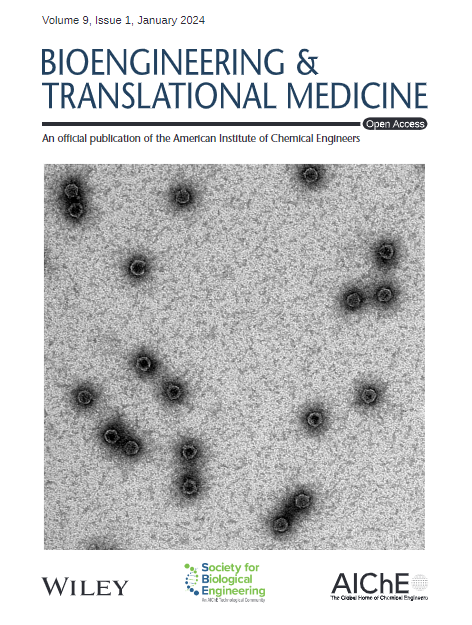脑机接口用微丝结构皮质内电极阵列的最新进展
IF 5.7
2区 医学
Q1 ENGINEERING, BIOMEDICAL
引用次数: 0
摘要
近年来,脑机接口(bmi)取得了显著进步,多家公司开始进行人体试验。因此,大脑和电极之间的界面变得比以往任何时候都更加关键,这就要求植入的电极不仅具有生物相容性和微创性,而且能够在大脑中终身保持功能。虽然皮质内电极的制造已经取得了重大进展,但在确保使用寿命和减少组织损伤方面仍然存在挑战。此外,制造技术中对手工劳动的依赖对大规模生产的商业化构成了障碍。在这篇综述中,我们探讨了最近在制造微丝结构电极阵列方面的突破和障碍,其中单丝排列在xy矩阵中用于皮层穿透。我们讨论了各种制造策略和材料对种植体寿命的影响,以及该领域仍存在的挑战。本文章由计算机程序翻译,如有差异,请以英文原文为准。
Recent developments in microwire‐structured intracortical electrode arrays for brain–machine interfaces
Brain–machine interfaces (BMIs) have experienced remarkable advancements in recent years, marked by multiple companies initiating human trials. Consequently, the interface between the brain and electrodes has become more critical than ever, requiring implanted electrodes to be not only biocompatible and minimally invasive but also capable of remaining functioning in the brain for a lifetime. While significant progress has been made in the manufacturing of intracortical electrodes, challenges persist in ensuring longevity and minimizing tissue damage. Additionally, the reliance on manual labor in fabrication techniques poses obstacles to large‐scale production for commercialization. In this review, we explore recent breakthroughs and obstacles in the fabrication of microwire‐structured electrode arrays, wherein single wires are arranged in an xy matrix for cortical penetration. We discuss the impact of various fabrication strategies and materials on implant longevity, as well as the remaining challenges in this field.
求助全文
通过发布文献求助,成功后即可免费获取论文全文。
去求助
来源期刊

Bioengineering & Translational Medicine
Pharmacology, Toxicology and Pharmaceutics-Pharmaceutical Science
CiteScore
8.40
自引率
4.10%
发文量
150
审稿时长
12 weeks
期刊介绍:
Bioengineering & Translational Medicine, an official, peer-reviewed online open-access journal of the American Institute of Chemical Engineers (AIChE) and the Society for Biological Engineering (SBE), focuses on how chemical and biological engineering approaches drive innovative technologies and solutions that impact clinical practice and commercial healthcare products.
 求助内容:
求助内容: 应助结果提醒方式:
应助结果提醒方式:


